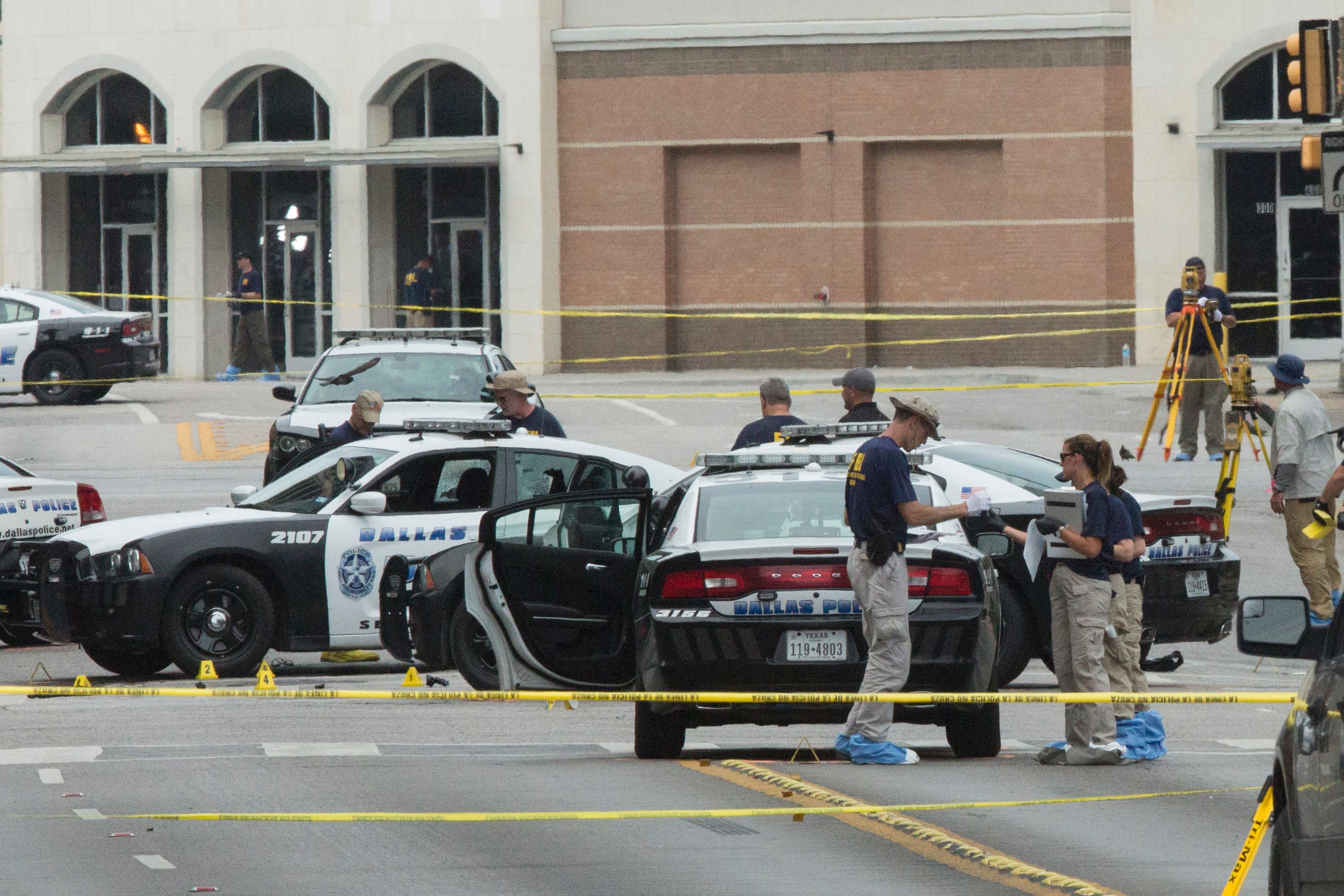
Given the horror of the murder of the five police officers in Dallas last Thursday, it may seem absurd or distasteful to ask whether it was a good idea to kill the sniper with a bomb mounted on a robot. Surely anything that stopped the carnage was justified in the moment, and the police seem to have had no clear shot at the sniper. But the issue is more complicated, and it deserves to be considered carefully. There’s a legal difference between targeting a crime suspect and targeting a wartime enemy. There’s also a difference between using a weapon that can be aimed and using one that puts bystanders at greater risk. And a precedent set under emergency conditions can easily expand in future cases. The step from the robot bomb to a drone strike is barely even incremental: Morally and technologically, they’re basically the same. Bombs and missiles aren’t new. There are reasons they are hardly ever used for domestic law enforcement in the US. Those reasons have to do with precision, scale, and the difference between apprehending criminals and fighting wars. We should be cautious and thoughtful about the expansion – even when we’re using the tools of war to save innocent lives. We need rules and protocols to govern their use, both to protect the public and to make sure the police have guidance and don’t have to improvise under extreme pressure. We don’t yet know exactly the circumstances that led the Dallas police to resort to use of the bomb. But we do know that the sniper was by legal definition a suspect. He hadn’t yet been arrested or convicted. He could have been legally insane, or he might not have been the shooter at all. The police were operating under emergency conditions, trying to save innocent lives. Lethal force is legally justified in trying to stop a suspect who is using lethal force. That’s why it would have been perfectly acceptable for police sharpshooters to shoot the sniper in the head or heart. And it’s the reason that, on the surface, there seems to be nothing troubling about killing him with a bomb. But there’s an important caveat to the principle that a suspect may be stopped with lethal force. The legal force has to be necessary to stopping the suspect. It would almost always be more convenient for police to kill a violent felon in the course of committing a crime than to apprehend him. But a police force that systematically and intentionally killed all such suspects would be guilty of executing them extrajudicially. The United Nations would investigate, and international law, which prohibits extrajudicial killing, would be invoked. Nobody is accusing the Dallas police of extrajudicial killing; lethal force may well have been necessary to stop the sniper there. That is a judgment that’s hard to make and only the authorities at the scene can make it. Ideally, it would have been better to use a police shooter, who might have been able to wound or incapacitate the sniper without killing him, and might have been in the best position to determine whether killing him was legally necessary. Using a shooter would also probably have reduced the chance that others could be hurt. But it’s quite likely that it wouldn’t have been possible to put a shooter into position without endangering the lives of more officers. If the police had a video camera on the robot that showed them that the suspect was alone, then the collateral damage worry may have been mitigated. In that case the bomb could have functioned just like a lethally aimed bullet. In fact, sometimes technology might even allow deploying less lethal force than a bullet, in the form of a stun grenade, for example. So I’m not saying the use of the robot was legally unjustified here. I’m simply noting that the use of lethal force has to be necessary. War is different from police work. Under the laws of war, a soldier is allowed to kill his enemy without worrying about trying to incapacitate him (unless he’s in the process of surrendering). He or she must exercise proportionality with respect to collateral damage. But soldiers are entitled to what’s called battlefield immunity when it comes to lethal force. Then there’s the question of the precedent created by the use of the bomb in Dallas. A robot with a bomb attached is no different from a drone that fires a missile. Law enforcement already has drones. It’s now only a matter of time until law enforcement uses a targeted drone strike to take out a suspect. That will happen, one hopes, when the danger of collateral damage is relatively trivial – but who knows? In future cases, the temptation to use bombs and missiles to take out suspected criminals who are killing innocent people will be great. After all, such technology will protect the lives of police officers and other innocent victims. Before that happens, however, we need rules to determine when and whether such force should be used. Maybe there’s nothing wrong with using bombs and missiles for domestic law enforcement. Once we go down that road, however, it will be easy to forget that the suspects being killed aren’t wartime enemies, but people who are legally presumed innocent until proven guilty. - Bloomberg View